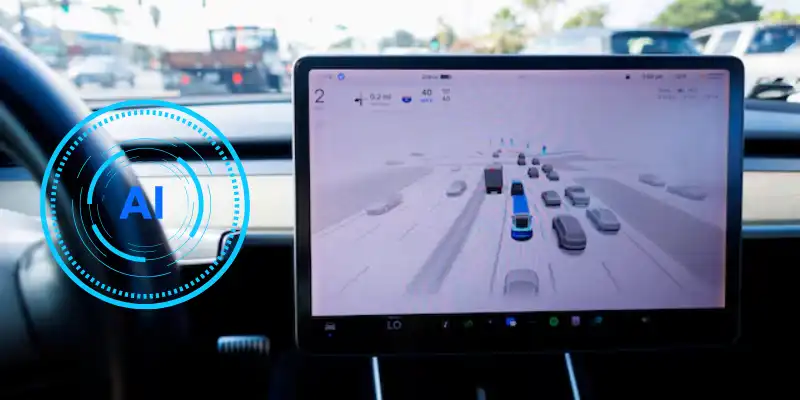Artificial Intelligence (AI) has rapidly evolved from a futuristic concept into an integral part of our daily lives. From simplifying routine tasks to enhancing productivity and personalizing experiences, AI technologies offer numerous benefits. This comprehensive guide explores how to maximize the use of AI in various aspects of daily life, providing practical tips and examples to help you leverage these technologies effectively.

1. Enhancing Personal Productivity
Purpose: AI can streamline daily tasks, manage schedules, and boost overall productivity.
Applications:
- Virtual Assistants: AI-powered virtual assistants like Siri, Google Assistant, and Alexa can help manage your calendar, set reminders, and answer queries. They integrate with various apps and services to make daily planning more efficient.
- Example: Use Google Assistant to schedule meetings, create to-do lists, and set reminders for important tasks.
- Task Automation: Tools like Zapier and IFTTT automate repetitive tasks by connecting different apps and services. For instance, you can automatically save email attachments to cloud storage or post social media updates based on specific triggers.
- Example: Set up a Zap that saves new email attachments from your work email directly to Google Drive.
Tips:
- Integrate AI Assistants: Connect your virtual assistant with your smart devices and apps for seamless control over your environment.
- Explore Automation Tools: Identify repetitive tasks and configure automation tools to handle them, freeing up your time for more important activities.

2. Improving Health and Wellness
Purpose: AI can support fitness goals, track health metrics, and provide personalized wellness recommendations.
Applications:
- Fitness Trackers: AI-powered fitness trackers like Fitbit and Apple Watch monitor physical activity, heart rate, and sleep patterns. They offer insights and recommendations to help you stay on track with your fitness goals.
- Example: Use a fitness tracker to analyze your sleep quality and receive suggestions for improving your sleep habits.
- Health Apps: Apps like MyFitnessPal and Headspace use AI to offer personalized diet plans, exercise routines, and mental wellness exercises.
- Example: Use MyFitnessPal to track your daily calorie intake and receive personalized meal recommendations based on your dietary goals.
Tips:
- Monitor Metrics: Regularly check the data provided by your fitness tracker or health app to stay informed about your progress.
- Personalize Recommendations: Adjust app settings and preferences to receive tailored recommendations that align with your specific health and wellness goals.

3. Optimizing Finances
Purpose: AI can assist in budgeting, investment management, and financial planning.
Applications:
- Budgeting Apps: AI-driven budgeting apps like Mint and YNAB (You Need a Budget) analyze spending patterns, categorize expenses, and provide insights for better financial management.
- Example: Use Mint to track your monthly expenses and receive alerts when you approach your budget limits.
- Investment Platforms: Robo-advisors such as Betterment and Wealthfront use AI algorithms to create and manage investment portfolios based on your financial goals and risk tolerance.
- Example: Use Betterment to automatically invest and diversify your portfolio based on AI-driven recommendations.
Tips:
- Track Spending: Regularly review your spending and budget categories to ensure you stay on track with your financial goals.
- Leverage Robo-Advisors: Utilize robo-advisors to manage investments and optimize portfolio performance with minimal effort.

4. Enhancing Home Automation
Purpose: AI can make home management more efficient and convenient through smart home technology.
Applications:
- Smart Thermostats: AI-powered thermostats like Nest and Ecobee learn your heating and cooling preferences and adjust settings automatically to optimize energy use.
- Example: Use Nest to program your thermostat to adjust temperatures based on your daily routines and preferences.
- Voice-Controlled Devices: Smart speakers and assistants allow voice control over various home devices, including lights, locks, and appliances.
- Example: Use an Alexa-enabled device to control smart lights and adjust their brightness with voice commands.
Tips:
- Set Up Routines: Create custom routines and schedules for your smart home devices to automate tasks and enhance convenience.
- Monitor Energy Usage: Use smart thermostats and plugs to monitor and reduce energy consumption in your home.

5. Enhancing Learning and Skill Development
Purpose: AI can facilitate learning by providing personalized educational content and resources.
Applications:
- Language Learning Apps: AI-powered apps like Duolingo and Babbel use adaptive learning techniques to tailor language lessons based on your proficiency and progress.
- Example: Use Duolingo to practice new languages with interactive exercises and personalized feedback.
- Online Courses: Platforms like Coursera and Khan Academy offer AI-driven recommendations for courses and learning paths based on your interests and goals.
- Example: Use Coursera’s recommendations to find courses relevant to your career development and personal interests.
Tips:
- Set Learning Goals: Define clear learning objectives and use AI tools to track your progress and adjust your study plan accordingly.
- Engage with Interactive Content: Take advantage of interactive and personalized content provided by AI-powered learning platforms to enhance your learning experience.

6. Enhancing Shopping Experiences
Purpose: AI can personalize shopping experiences, recommend products, and streamline the purchasing process.
Applications:
- Personalized Recommendations: E-commerce platforms like Amazon and Alibaba use AI to analyze your browsing history and purchase behavior, offering personalized product recommendations.
- Example: Use Amazon’s recommendations to discover new products based on your previous purchases and browsing history.
- Virtual Try-Ons: AI-powered tools enable virtual try-ons for clothing and accessories, allowing you to see how items will look on you before purchasing.
- Example: Use virtual try-on features on fashion retailer websites to preview how different clothing items will fit and look.
Tips:
- Explore Recommendations: Take advantage of personalized recommendations to discover new products and streamline your shopping experience.
- Use Virtual Try-Ons: Utilize virtual try-on tools to make informed purchasing decisions and reduce the likelihood of returns.

7. Streamlining Communication
Purpose: AI can enhance communication by improving language translation, grammar correction, and email management.
Applications:
- Language Translation: AI-powered translation services like Google Translate and DeepL offer real-time translation of text and speech, facilitating communication across different languages.
- Example: Use Google Translate to communicate with individuals who speak different languages or to understand foreign language content.
- Grammar and Writing Assistance: Tools like Grammarly and Hemingway use AI to check grammar, punctuation, and style, providing suggestions for improving written content.
- Example: Use Grammarly to review and enhance the quality of your emails, reports, and other written documents.
Tips:
- Utilize Translation Tools: Leverage AI-driven translation tools to overcome language barriers and enhance cross-cultural communication.
- Enhance Writing: Use grammar and writing assistance tools to ensure your written communication is clear, accurate, and professional.

8. Optimizing Travel and Navigation
Purpose: AI can improve travel experiences by providing personalized recommendations, real-time navigation, and travel planning assistance.
Applications:
- Navigation Apps: AI-driven navigation apps like Google Maps and Waze offer real-time traffic updates, route optimization, and alternate routes to avoid delays.
- Example: Use Google Maps to find the fastest route to your destination and receive real-time traffic alerts.
- Travel Planning: AI-powered travel platforms such as Skyscanner and Expedia use algorithms to recommend flights, accommodations, and activities based on your preferences.
- Example: Use Skyscanner to compare flight options and find the best deals for your travel plans.
- Full Self-Driving (FSD) is an advanced driver assistance system designed to offer a higher level of automation for vehicles. It aims to enable cars to drive autonomously, handling a wide range of driving tasks with minimal human intervention.
- Example: Tesla’s Full Self-Driving is a cutting-edge driver assistance system that brings us closer to the future of autonomous vehicles. While it offers significant advancements in automation and convenience, it is essential to recognize its current limitations and the need for driver supervision.
Tips:
- Plan Efficiently: Use AI-driven travel platforms to compare options and make informed decisions for your trips.
- Stay Informed: Utilize navigation apps to stay updated on traffic conditions and optimize your travel routes.
- Full Self Driving Safety: To ensure safety and proper care with Full Self-Driving system, stay attentive and ready to take control, keep your vehicle updated and well-maintained, understand the system’s limitations, follow local regulations, and monitor for alerts.

9. Enhancing Entertainment
Purpose: AI can personalize entertainment experiences by recommending content, optimizing streaming quality, and providing interactive experiences.
Applications:
- Content Recommendations: Streaming services like Netflix and Spotify use AI to recommend movies, TV shows, and music based on your viewing and listening history.
- Example: Use Netflix’s recommendations to discover new movies and TV shows that align with your interests.
- Interactive Entertainment: AI-powered gaming systems and apps provide personalized gaming experiences, adapting difficulty levels and game content based on player behavior.
- Example: Use AI-driven gaming systems to enjoy personalized challenges and storylines in your favorite games.
Tips:
- Explore Recommendations: Take advantage of personalized content recommendations to discover new entertainment options.
- Engage with Interactive Features: Utilize interactive and adaptive features in gaming and entertainment apps for a more immersive experience.

Conclusion
Maximizing the use of AI in daily life can lead to significant improvements in productivity, health, financial management, home automation, learning, shopping, communication, travel, and entertainment. By integrating AI technologies thoughtfully and strategically, you can streamline your routines, make informed decisions, and enhance various aspects of your personal and professional life. Embrace the potential of AI to simplify tasks, provide personalized experiences, and ultimately improve your quality of life.


